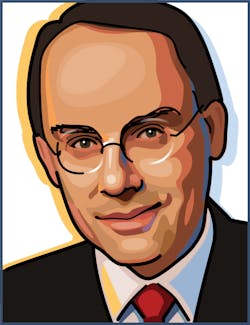ELI-ALPS, the European attosecond laser facility, inaugurated

Image. The ELI ALPS building was officially opened by Hungarian notables including the managing director of the ELI-HU Non-Profit Ltd. Lóránt Lehrner, the Hungarian Prime Minister Viktor Orbán, the President of the National Research, Development and Innovation Office József Pálinkás, and the Mayor of Szeged, László Botka (from left to right).
On May 23, the Grand Opening Ceremony of the Extreme Light Infrastructure--Attosecond Light Pulse Source (ELI-ALPS) took place in Szeged, Hungary. With the building that houses the Hungarian pillar of the biggest European laser research project now complete, the lasers can be erected and the facility partially open to users in 2018, before reaching full operation in 2020.
At the event, speeches were given by Lóránt Lehrner, the local Managing Director and Ferenc Krausz, Director at the Max Planck Institute of Quantum Optics in Munich, Germany. Also speaking was the Hungarian Prime Minister Viktor Orbán, who has recently been heavily criticized for his latest higher education laws by the European parliament.
Approxmiately 85% of the total funding of about 240 million Euro for ELI ALPS comes from the European Union. Distinguishing it from other research projects, ELI’s funding is provided by the European Union's Regional Development Fund (ERDF) and not by regular European research programs such as Horizon 2020.
ELI is implemented as a distributed research infrastructure with three pillars: ELI-ALPS in Szeged, Hungary, ELI-Nuclear Physics (ELI-NP) in Magurele, Romania, and ELI-Beamlines (ELI-BL) in Dolní Břežany, Czech Republic.
Designed as a user facility, ELI will host researchers from all over the world. A first call for experiments will probably be issued by the end of 2017; first experiments would be possible in 2018 or 2019. The experimental time will be distributed under the auspices of the ELI delivery consortium (ELI DC) or by a newly established European Research Infrastructure Consortium (ELI ERIC). The ELI-ERIC will be supported by countries, in a similar scheme to CERN and European XFEL.
World record lasers for ELI-ALPS
The main scientific mission of ELI-ALPS is to enable visualization of ultrafast structural dynamics of matter with the highest resolution in both space and time. Furthermore, the mission aspires to contribute to the development of high-peak-power and high-average power light sources.
Lasers with high photon flux, extreme spectral bandwidths, and sub-light-cycle control of the electromagnetic field are specifically engineered to drive cutting-edge secondary particle and radiation beamlines. Those lasers are currently built in other facilities across Europe.
For the Petawatt laser (10 Hz, 15 fs) and the THz pump laser, Amplitude Technologies (Lisses, France) has been contracted. The single-cycle (SYLOS) laser is designed to deliver 20 TW and < 6 fs pulses based on optical parametric amplification. It is built by a Lithuanian consortium of Ekspla and Light Conversion. The record setting high repetition rate (HR) laser with TW peak power and < 6 fs pulses at 100 kHz will be made in Jena, Germany. The mid-infrared laser with sub-4 cycle, tunable laser pulses at 100 kHz repetition rate with over 15 W average power comes from Fastlite (Valbonne, France).
As the flagship of the ELI-ALPS’ secondary sources, high harmonic generation (HHG) in gas targets will provide EUV attosecond pulses at repetition rates ranging between 1 kHz and 100 kHz, pulse energies ranging from 1 nJ to 1 μJ respectively, and pulse durations of the order of 0.5 fs, enabling detailed investigation through coincidence measurements, imaging techniques, and/or non-linear EUV processes.
Image. 252 people work for ELI-ALPS already--this number will increase to 300 by the time the research center is fully operational.
About the Author
Andreas Thoss
Contributing Editor, Germany
Andreas Thoss is the Managing Director of THOSS Media (Berlin) and has many years of experience in photonics-related research, publishing, marketing, and public relations. He worked with John Wiley & Sons until 2010, when he founded THOSS Media. In 2012, he founded the scientific journal Advanced Optical Technologies. His university research focused on ultrashort and ultra-intense laser pulses, and he holds several patents.
